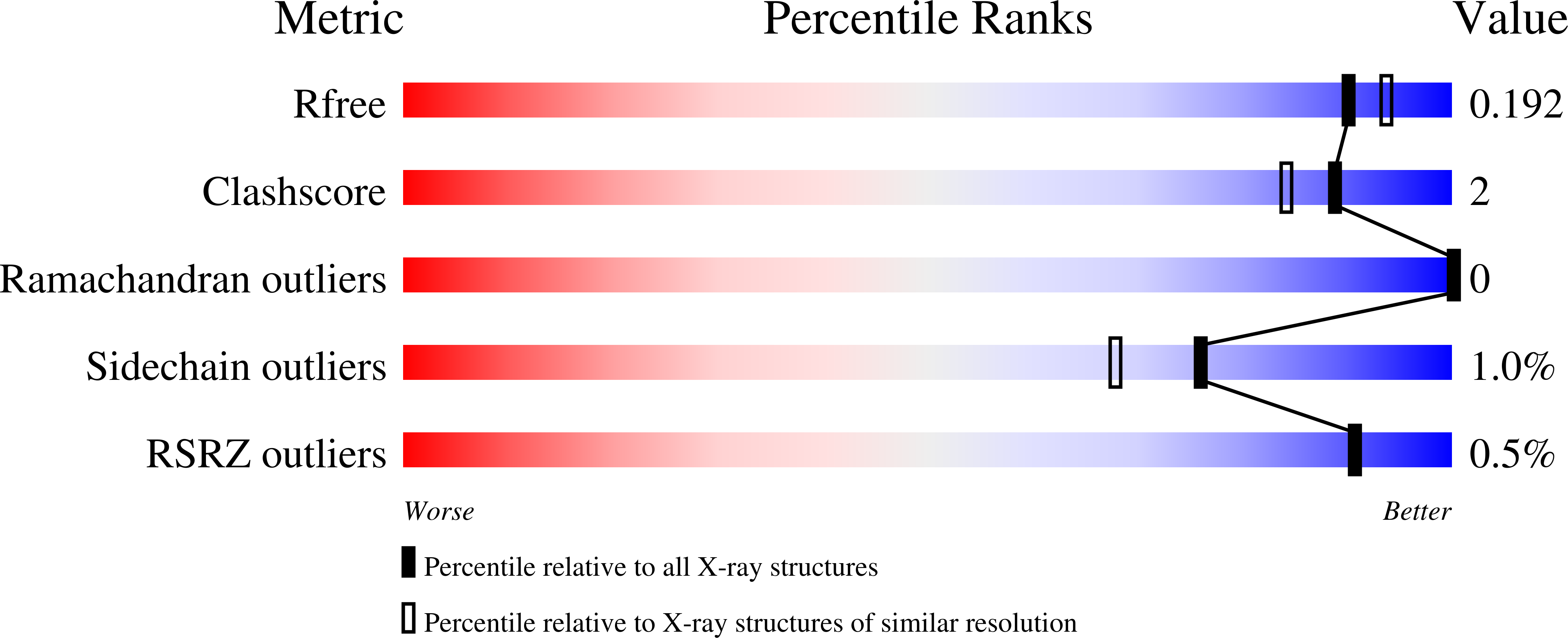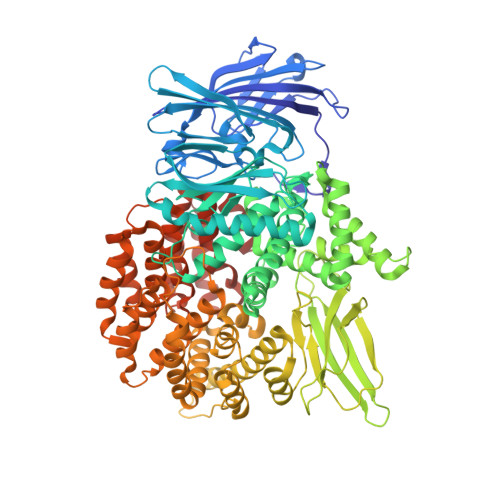Structure-based development of potent Plasmodium falciparum M1 and M17 aminopeptidase selective and dual inhibitors via S1'-region optimisation.
Calic, P.P.S., Vinh, N.B., Webb, C.T., Malcolm, T.R., Ngo, A., Lowes, K., Drinkwater, N., McGowan, S., Scammells, P.J.(2022) Eur J Med Chem 248: 115051-115051
- PubMed: 36634455
- DOI: https://doi.org/10.1016/j.ejmech.2022.115051
- Primary Citation of Related Structures:
8EWZ, 8EX3, 8EYD, 8EYE, 8EYF, 8EZ2, 8EZ4 - PubMed Abstract:
Malaria remains a global health threat and growing resistance to artemisinin-based therapies calls for therapeutic agents with novel mechanisms of action. The Plasmodium spp M1 and M17 metalloaminopeptidases have been identified as attractive new antimalarial drug targets as inhibition of these enzymes results in antiplasmodial activity. Previously identified novel hydroxamic acid 2 as a moderate inhibitor of PfA-M1 and PfA-M17 and a potent inhibitor of P. falciparum. This study has sought to improve the enzymatic inhibitory properties in addition to increasing the drug-likeness of this scaffold by introducing polar moieties into the S1' region of the active site. Structural biology studies on the co-crystallised structures of potent dual-inhibitor 9aa bound to PfA-M1 and PfA-M17 have revealed that there are few direct interactions between the inhibitor and the S1' domain of these enzymes. Structure-based compound design led to the identification of a variety of novel hydroxamic acids that show improved inhibitory activity against PfA-M1 and PfA-M17, in addition to displaying antiplasmodial activity. Notably, compounds with substitutions on the aniline ring resulted in a loss of potency (K i ?>?500?nM) toward PfA-M1 and PfA-M17. ioisosteric replacement of the S1-region biaryl ring system with a bromophenyl moiety resulted in increased potency compared to parent 9aa. Elaboration of 9aa to bioisosterically replace the S1 moiety with an aryl bromide, combined with substituted anilines has resulted in potent selective PfA-M1 inhibitors which show strong activity against Pf-3D7, with meta- and para-fluoroaniline groups of 15ag and 15ah forming hydrogen-bonds with residues within the active site. These findings establish the importance of the previously under-utilised S1' domain and will aid the design of future PfA-M1 and PfA-M17 inhibitors.
Organizational Affiliation:
Medicinal Chemistry, Monash Institute of Pharmaceutical Sciences, Monash University, Parkville, Victoria, 3052, Australia.

















